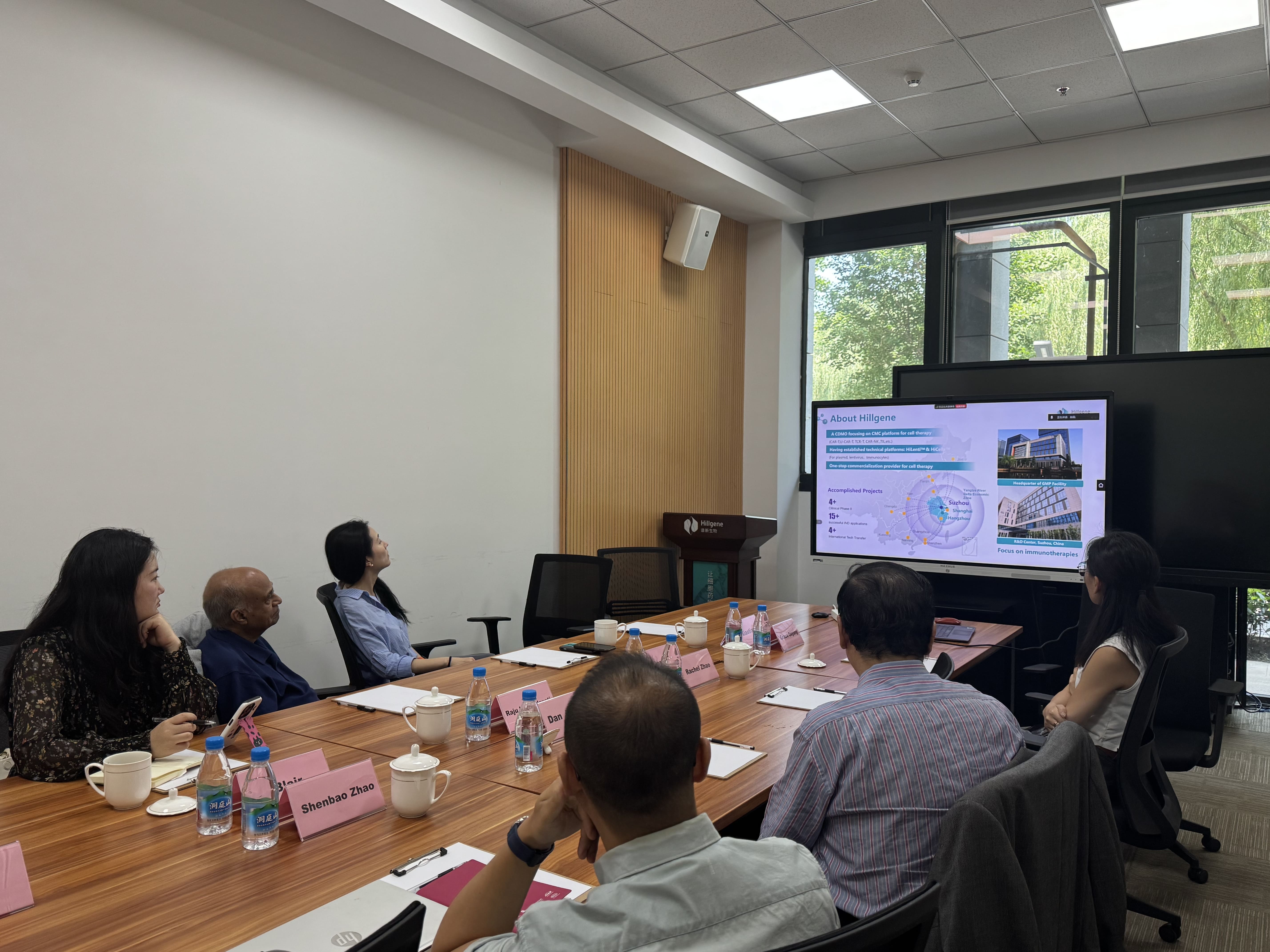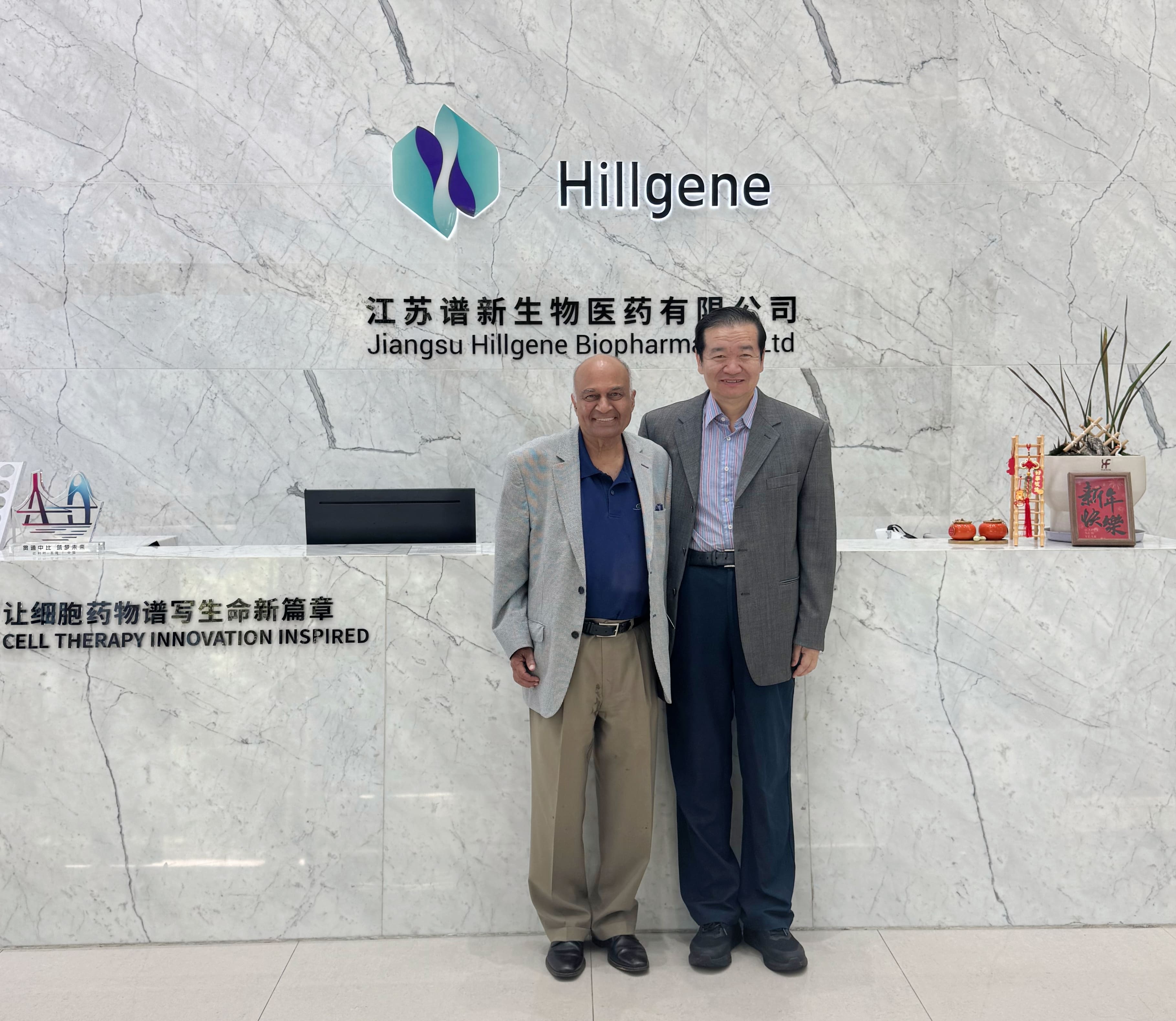On June 26, Professor Raju Kucherlapati, a world-renowned expert in genetics and medicine and member of the U.S. National Academy of Medicine (NAM), visited UPMED Biotech with his delegation. The two parties engaged in discussions ranging from the challenges of traditional cell therapy manufacturing to the advantages of innovative processes, jointly mapping out the future development of cell-based medicines.
.jpg)
Accompanied by Spectrum Bioscience's Co-Chairman of the Board, Academician Dan Zhang, and the company's leadership team, Professor Raju Kucherlapati and his delegation conducted an in-depth tour of Hillgene's innovative, diversified, end-to-end automated cell therapy R&D and manufacturing facility. The delegation particularly commended Hillgene's specialized production line for point-of-care (POC) cell therapy development and manufacturing.
Professor Kucherlapati highlighted the remarkable achievements of cell therapies in treating hematologic malignancies, while noting the active progress being made in both research and industrial applications for solid tumor treatments through continued discovery and innovation.

The Hillgene technical team provided a comprehensive overview of their Point-of-Care (POC) CAR-T cell therapy manufacturing and quality control system, presenting complete project development and production data. By integrating traditional process expertise with AI-driven advantages, this advanced cell therapy platform achieves significant production cost reduction.
Professor Raju Kucherlapati focused particularly on solid tumor applications. During discussions on NK cell therapeutics, the Hillgene team showcased their fully integrated, in-house NK cell therapy solution, highlighting:
High transduction efficiency
End-to-end cell processing platform
Large-scale, serum-free suspension culture technology
Professor Kucherlapati shared clinical insights on NK cell combination therapies and emphasized the need to further demonstrate NK therapeutics' future clinical value.
On Global Collaboration:
Professor Kucherlapati stressed that U.S.-China partnerships are critical for biotech innovation, noting that while regulatory differences and cultural distinctions exist, cross-disciplinary integration and international collaboration remain the most effective pathway to:
Accelerate cancer treatment advances
Drive technological and clinical innovation
Overcome existing therapeutic bottlenecks

Regarding potential future collaboration mechanisms, both Professor Raju Kucherlapati and Academician Dan Zhang expressed their commitment to establishing a joint technical working group led by respective chief scientists, along with developing an intellectual property sharing framework agreement. By leveraging Hillgene's proven expertise in cell therapy development and industrial-scale manufacturing capabilities, this partnership aims to accelerate breakthroughs in addressing current challenges of cost and accessibility in cell-based therapies.